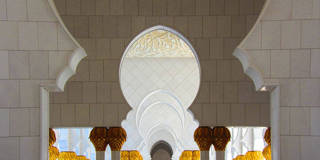The Islamic “golden age” – during which science and knowledge flourished across the Muslim world – lasted many centuries. Today, Muslim-majority countries lag well behind the rest of the world, in terms of both education and research – a gap that can and must be closed.
SHARJAH – The Muslim world’s past contributions to science and education were extraordinary. The Islamic “golden age” – during which scholarship and learning flourished across the Muslim world – lasted many centuries, and included the establishment of the world’s first universities. Today, however, Muslim-majority countries lag well behind the rest of the world in terms of education and research. This must change if the region is to provide modern jobs and better lives to its booming population and keep up with global development.

SHARJAH – The Muslim world’s past contributions to science and education were extraordinary. The Islamic “golden age” – during which scholarship and learning flourished across the Muslim world – lasted many centuries, and included the establishment of the world’s first universities. Today, however, Muslim-majority countries lag well behind the rest of the world in terms of education and research. This must change if the region is to provide modern jobs and better lives to its booming population and keep up with global development.